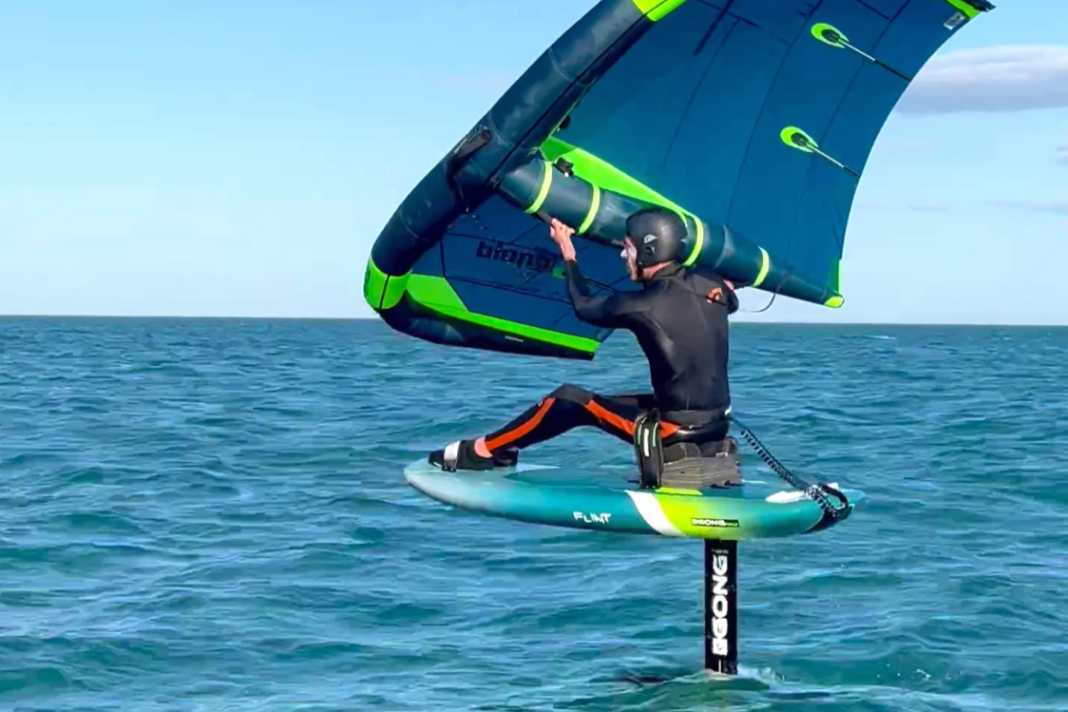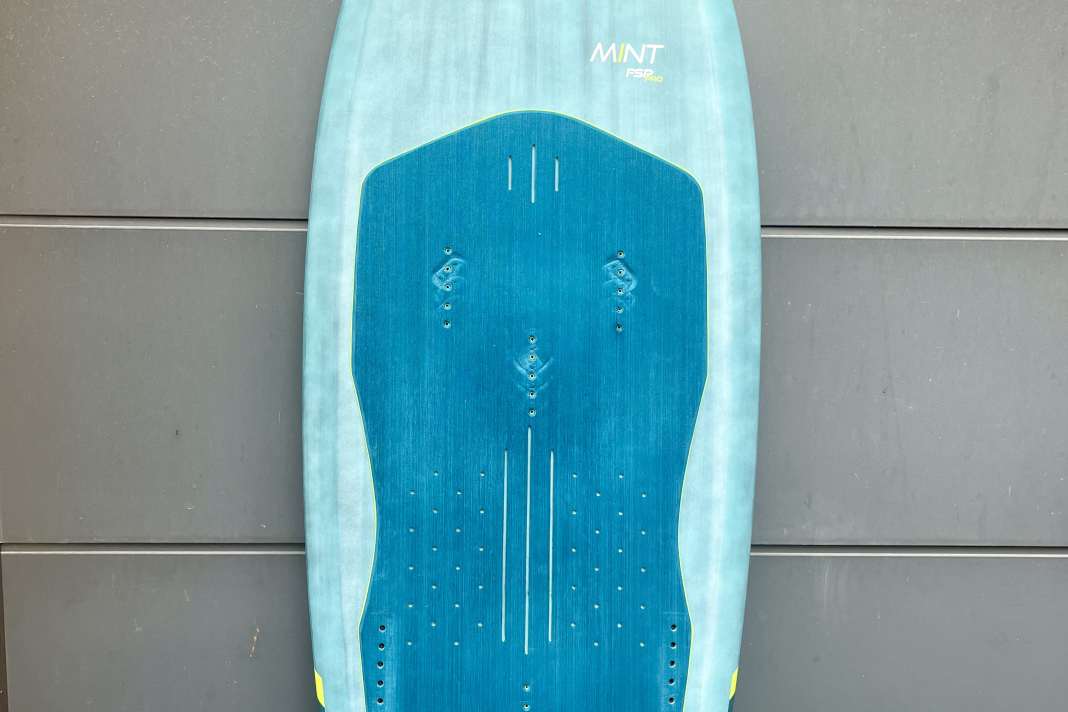





Guillaume Colin comes from Montpellier in the south of France - many of the region's top spots are right on his doorstep. It goes without saying that Guillaume enjoys all kinds of water sports - until a tragic accident turns his life upside down. But giving up is not an option for Guillaume - he fights his way back onto the water and the 40-year-old has even been foiling for a few months now. In this interview, he reveals how he did it.
Guillaume, from wheelchair to foilboard, that wasn't always the case. Tell us how it came about.
I grew up here in the south of France. The opportunities for water sports are huge here and surfing was a big part of my life even before my accident. I've been passionate about windsurfing, surfing and snow sports since I was a teenager. I had an accident in 2015 and have been paralysed from the waist down ever since.
I was looking for a way to put fun and adrenaline back into my body
What exactly happened to you back then?
I flew in a glider in the French Alps. I had no connection to flying, I was basically travelling as a tourist. I honestly don't want to talk about the exact circumstances, but it was tragic. I was in hospital and a rehabilitation centre for eight months. When I got out of there, I continued with physiotherapy. It took just under a year before I could say that I had arrived in my new everyday life. I have a little bit of residual feeling in my legs. If I hold on to something, I can stand for a short time, but otherwise I need the wheelchair.

Was your life in water sports put on hold after the accident? Or were these thoughts that perhaps also fuelled and motivated you?
During the first few months in the rehab centre, the focus was naturally on other, elementary things. However, relatively soon after I was discharged, I started thinking about how I could get the feeling I loved and the adrenaline rush of surfing back. Simply stopping all the good things was never an option for me, so I looked at what was possible. The first thing I did was to start surfing sitting down and riding the waves, also known as waveskiing. It's a big surfboard that I can sit on and am strapped in. At some point, I took part in competitions. In 2023, I came first with the French team at the Para Surf World Championships, and in 2022 I was runner-up in the individual world championship. During the winter months, there are really good training conditions with waves here in the south of France and of course I also travel around for contests or to train. I surf in a different way now, but the fun I have is comparable.
I was never someone who dwelled on the past. I only look to the future
You started wingfoiling some time ago, a sport that didn't even exist when you had your accident. How did you manage it?
I started like everyone else. I started with just the wing on a long SUP to learn how to handle the wing. I wasn't lashed down to it and was sliding around on the deck quite a bit. But I immediately felt the familiar windsurfing sensation of holding the wind in my hands again. I then bought a wing and a board. Of course, I had to have the board customised first. I already knew the sitting position on the board from wave skiing. As a trained engineer, I'm already working on technical solutions for certain problems, so I thought about how I could wingfoil in a seated position and what tensioning device I would need on the board to be able to sit safely. So I had the straps and foot straps of my wave ski built onto a wingfoil board by a local boardshaper. So additional plugs had to be fitted.





How long did it take you to fly it for the first time?
Once I had my equipment together, it actually only took two or three more sessions before I managed longer flights for the first time. I'm now able to foil my jibes and am starting to ride the first small swells. I've also managed small jumps and I'm coping well in winds between 15 and 35 knots. In the near future, I want to learn the tack, the foil 360 and manage to do longer downwind flights. And maybe also my first freestyle tricks. Why not?
Not far from you, in Gruissan, the Defi Wind and the Defi Wing take place every year - the most famous long-distance races for windsurfers and wingfoilers. Do you have ambitions?
(Laughs) Yes, I recently signed up.
Seriously?
Yes, but I only go when the conditions are reasonably moderate. If it's blowing at over 40 knots, I prefer not to go.
I don't need any help with foiling. Just someone to carry me and my equipment to the water
Can you manage completely alone on the water? Or do you always have to have a boat with you for safety reasons?
At the very beginning, friends accompanied me in a boat. I now only really need help getting from the car to the water and back, because of course I can't get through the sand in my wheelchair and I can't get my equipment into the water. As soon as I'm in deep water, everything is fine. But of course I don't go out on the water alone, I usually go with friends. Foiling is a real enrichment for me, last week I was out four times.
What do you do if you fall? You're strapped to the board. How do you get back up?
Yes, that sounds scary at first (laughs). When I fall, I sometimes float upside down like a cork. My harness has a quick-release buckle that I can release in an emergency. Getting on the board and strapping myself back in works quite well. However, this is only necessary if I have tipped over to windward, i.e. away from the wing. If I'm lying on one side with the wing, I pull it towards me and use the air-filled tube to straighten myself up. Then I can stay seated with my seatbelt fastened.
At this point, you will find external content that complements the article. You can display and hide it with a click.
When wingfoiling, even in a standing position, it is sometimes annoying that the wingtips drag in the water when pumping. This problem must be even more serious in a sitting position, right?
This is indeed a problem when launching and limited me at the beginning. Because of my lower position on the board, I can't bring the wing down as far as I actually need to. That's why I always use a slightly larger wing than someone who is standing. Now the manufacturer Gong, who support me, have made me a special wing. It has a particularly small wingspan and is super light, which makes it much easier to launch. It's primarily about having fun, but I hope that it can also motivate other people with physical limitations to get out on the water.

